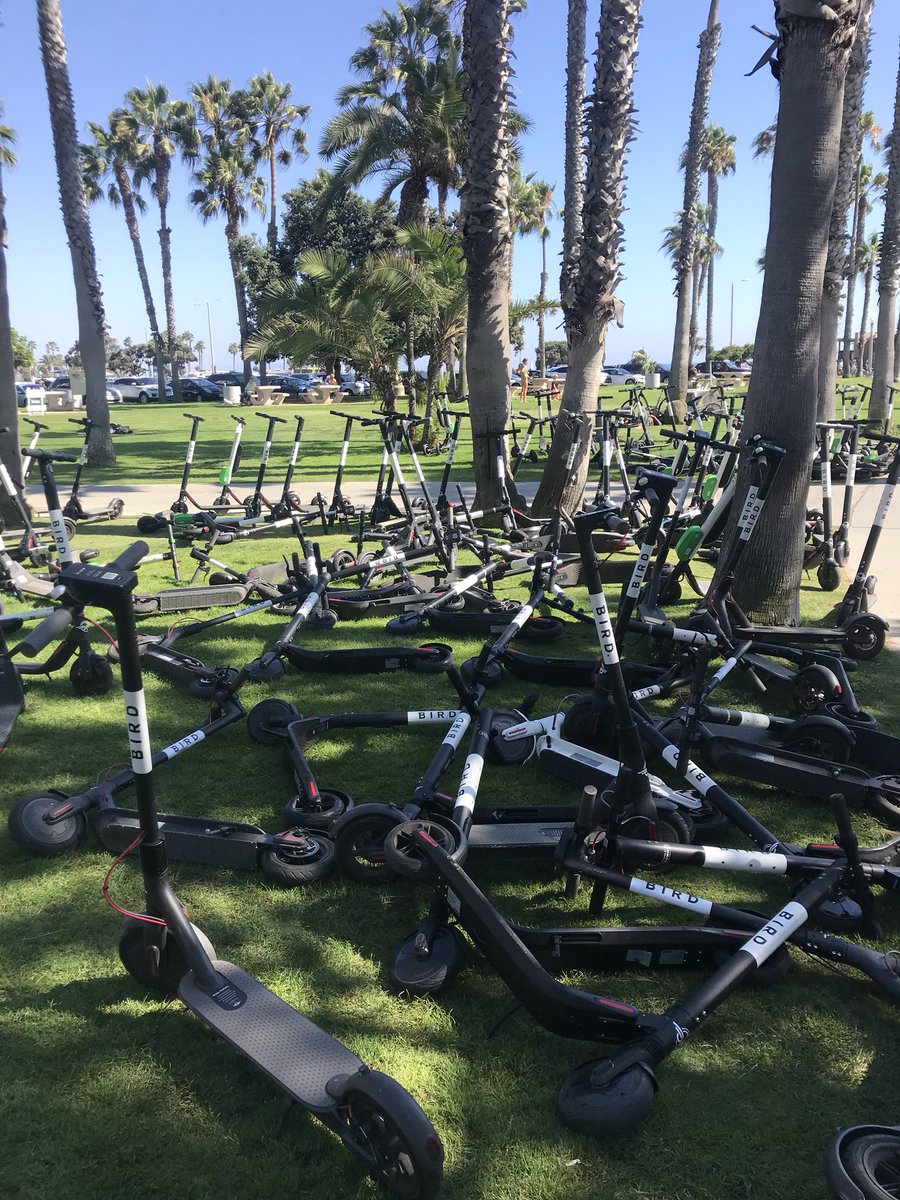The Bird Is The Word
Everybody’s heard the Bird if you live in one of the major metro areas that are fortunate, or unfortunate depending on who you ask, to have these electric scooters. The Bird company started in California in 2017, but since its March test run in San Francisco has grown exponentially to include several dozen cities throughout the U.S. But the Bird is just one of several scooter companies capitalizing on the new trend. There are scooter companies operating in 65 cities throughout the country not to mention dozens of scooters that can be purchased for us directly by the consumer.
Every time I see the Bird scooters I think of the Trashmen’s hit song Surfin Bird, so as a Minneapolis resident, home to the songs birthplace, I thought I would include it.
At first I thought the idea was just a way to provide lazy transportation or a silly toy to test out for fun. The scooters will get you from point A to B at a cost of only $1 plus 15 cents per minute. I zip past them on my bike ride home wondering why anyone would waste their time with the scooter. They do look fun, I’ll admit, but as a means of transportation they seem slow and inefficient. It is far healthier to just walk a few blocks to the bus stop or bike a few miles to your destination.
A map of the Bird scooter locations in Minneapolis on a week night
Thinking more on the subject however, they do provide an easy and cheap option for the first and last mile concern for public transit. If there is a scooter waiting for you at your stop that you can literally park outside your door, that saves you a 15 minute walk home after a long day at work. The problem is these scooters tend to get clustered in certain neighborhoods and are very unlikely to be at your transit stop waiting to be used. In Minneapolis for example, whenever I check the app map they tend to be in downtown or huddled in the Como neighborhood by the University. This issue is not just limited to the scooters. The new dock-less bikes hitting city streets will have the same problem. They are great for picking up and dropping wherever you happen to land, but they can be hard to find and often get clustered in one area.
The biggest downsides to the scooters on a national level mainly fall back to the actual riders themselves. Not all scooter riders are inconsiderate, but as in any situation, the bad apples are the ones that give the entire group their reputation. The major complaints I have heard so far are scooter riders do not pay attention while riding and nearly hit pedestrians and cars, or block the movement of bikes when in bike lanes. While I have not seen this happen in Minneapolis yet, many cities struggle with piles of scooters laying in parks or taking up sidewalk space.
An alarming number of Bird scooters in a Santa Monica park (photo courtesy of @mdeskind)
The solution to these problems is good management on the part of the company operating the scooters. Many websites show a commitment to educating their users about where they should and should not ride and where they should park them when finished. It seems to work in Minneapolis where I see most scooters parked just off the sidewalk, usually next to a structure like a bus stop or bench. It is a hard program to enforce however as these scooters can go pretty much anywhere and catching a scooter rider disregarding the rules would take too many additional resources.
So while I find the scooters interesting, I have not made up my mind about their effectiveness as an urban transportation tool. I think on the surface they have the ability help with the first and last mile problems, but they also have the ability to contribute to rising health problems, cluttering city streets, and rising crash risks with pedestrians, bikers, and cars. Also, from my limited observation in Minneapolis, the users appear to be mostly millennial’s or college students. The population that really would need the scooters to complete their transit journeys are not getting on board.







